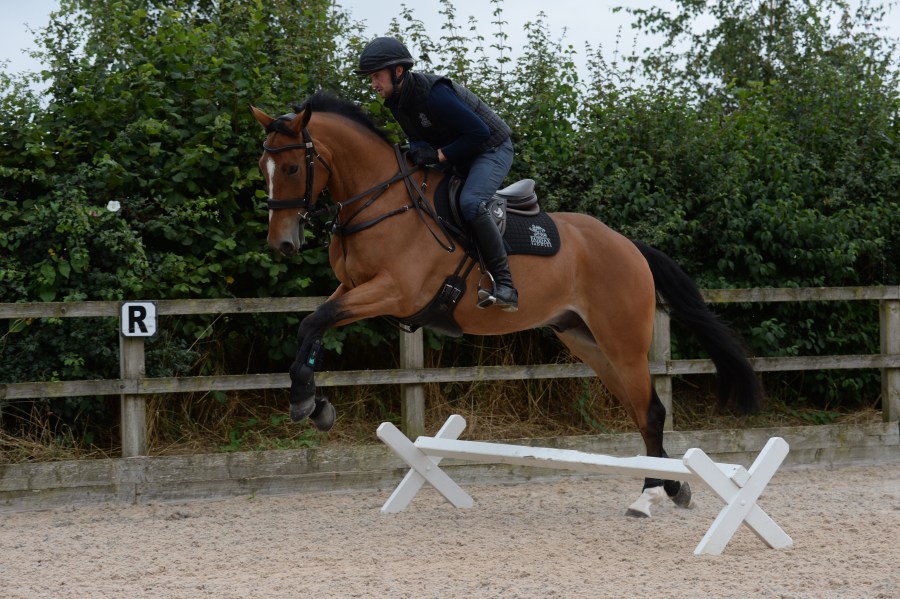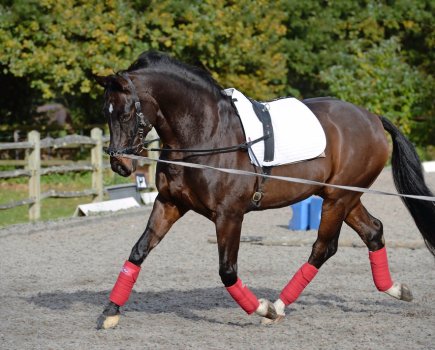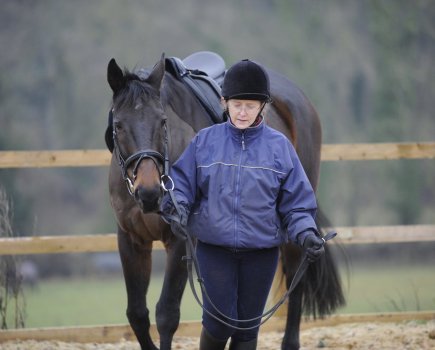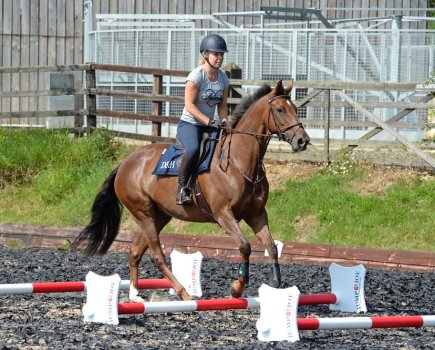Cavaletti are more than just little jumps, they are a great way to add variety to your showjumping session. Eventer Richard Waygood shares two exercises he uses to help spice up jumping exercises.
Things to consider when using cavaletti
- For safety reasons, cavaletti should never been stacked on top of each other.
- The poles used should be heavy enough that they don’t get kicked along.
- Use cavaletti only for the purpose they were designed for.
- If your horse gets bored or tired, they may start to trip. If they are bored, go away and do something different like jumping a small fence, then come back to the cavaletti. If they are tired, give them a break or finish the session after a cool down.
- Think outside the box and you’ll be able to adapt these exercises to suit your needs and goals.
- Remember that cavaletti are only a useful piece of training equipment when used correctly.
Exercise 1: Stop them rushing
Richard often uses raised cavaletti as placing poles before and after a fence. The extra height helps to focus your horse’s attention.
“This helps your horse to stay straight and keep the same rhythm before and after the fence, which is important when jumping a course,” says Richard. “It also stops them from opening their frame and getting too long as they canter away.”
Set it up: Place one raised cavaletti three to four strides in front of your fence and another one on the landing side. The one on the landing side needs to be at a slightly more generous distance for safety.
How to ride it:
- Pick up canter and approach the fence.
- Ensure you are riding them straight through the centre of the poles.
- Keep an even rhythm and speed. The placing pole will help stop your horse from getting faster and flatter.
Exercise 2: Bounce, bounce, bounce
“This is one of the best gymnastic exercises you can do – it’s great for strength and conditioning,” says Richard. “It’s ridden in canter and the rider’s job is to keep the rhythm and balance through the line.”
Set it up: Place three cavaletti at bounce distance along the long side of your arena, leave four or five non-jumping strides, then add another three cavaletti at bounce distance.
“The distance of the bounces depends on what you’re trying to achieve,” says Richard. “For instance, if you’re working on activating your horse’s hindleg, you might want the distances shorter, so your horse works over their back. To develop their medium canter, the cavaletti will need to be a little further apart.”
How to ride it:
- Approach the line of cavaletti in canter.
- You can ride this exercise in collected or medium canter, but whichever you choose, you must keep the impulsion and keep your horse in front of your leg.
- Ride through the whole line, maintaining forward momentum, but make sure you don’t confuse speed with impulsion.
Meet the expert: Richard Waygood MBE is the technical director and eventing performance manager at British Equestrian. He has been involved with supporting 23 championship medals, including leading the GB dressage team to Olympic success at London 2012 and Rio 2016 in his role as performance manager/ chef d’équipe.
Check out our subscription offer










